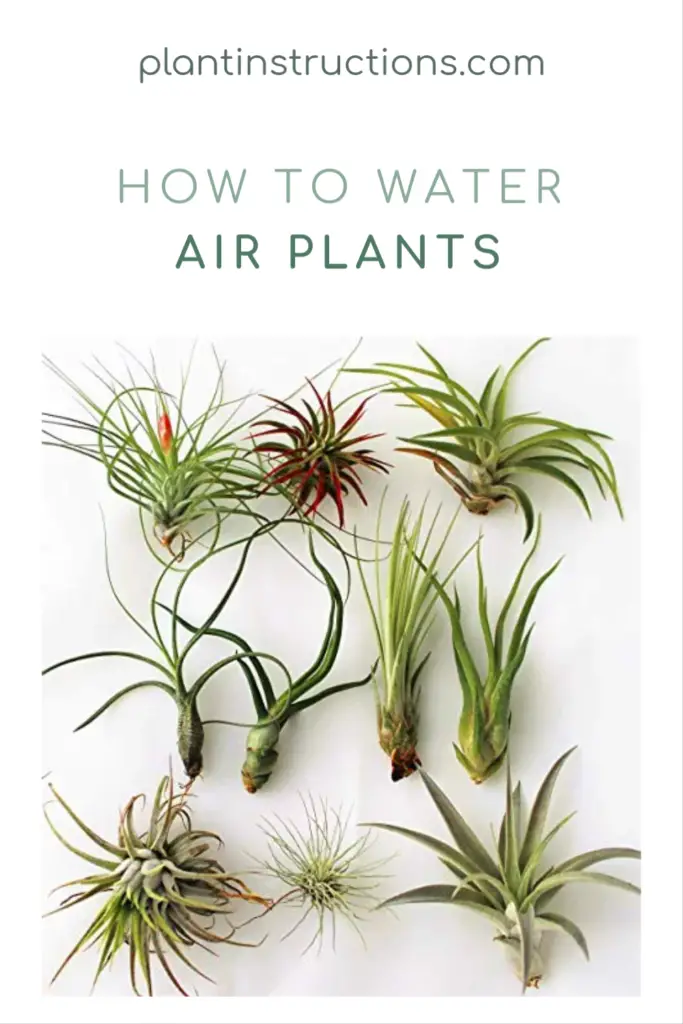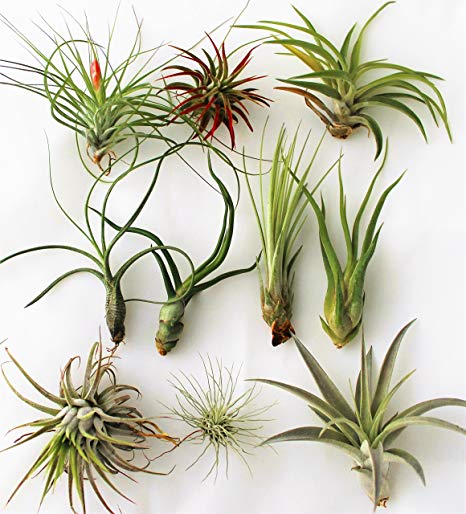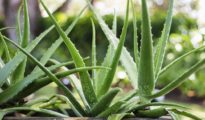Not sure how to water air plants? In this easy to follow guide, we'll show you exactly the right way to watering air plants! If you don't have the greenest of thumbs, air plants are some of the best plants you can have in your home.

They don't require soil, and therefore, are much easier to care for than traditional plants. Also known as Tillandsia, air plants will usually grow on other plants and emerge from trees and crooks. You'll often see these amazing plants on other trees outdoors, or on walls indoors.
Air plants give an amazing aesthetic to any home, and are also great for small spaces such as condos and apartments. Although air plants are easy to care for, they can also be a little tricky depending on the variety of air plant you have as well as the environment the plant is in. Keep reading to find out how to water air plants, how often to water air plants, and how to tell if your air plant needs water.
How to Water Air Plants
There are actually two different schools of thought when it comes to watering air plants. Some swear by simply misting their air plant 2-3 times a week, while other soak their air plant completely in water, allowing it to suck up as much as it needs.
So which way is best? This all depends on a few factors such as the humidity in the environment, the pot they're sitting in, and how much sun they're getting.
#1. Misting Air Plants
If your air plants are located in a warm, sunny area, it's best to mist them 2-3 times a week. Do this by filling a mister with fresh water and giving the plant a few mists.
If you live in a very warm, tropical, or sub-tropical area, you may also need to soak the roots in water once a week or once every two weeks. To do this, simply remove the air plant from its medium and soak its roots in fresh water for about 5 minutes. Remove the roots from the water and shake off any excess water.
Allow the roots to dry completely before placing the plant back into its medium. This will usually take anywhere from one to three hours. Be sure to allow the roots to completely dry, otherwise root rot will set in!
#2. Soaking the Roots
Another way to water air plants, is the soak the roots in water as mentioned above. If your plants aren't exposed to a lot of sun or warmth, you may only need to do this once every two weeks.
Remove the air plant from its pot and submerge the roots only in a glass with fresh water. Allow the roots to soak up water for about 5 minutes. Remove the roots from the water and shake off any excess. Allow roots to dry on a paper towel completely. This will take anywhere from one to three hours. Be sure to roots are completely dry before placing the air plant back into its medium, otherwise the risk of root rot will be very high.
Although both of these methods are great, but you'll have to test and see what your plant likes better.
How Often To Water Air Plants
There are hundreds (if not thousands) of air plant varieties, and it can be sometimes very hard to determine how often to water air plants without simply testing. There are a few different factors which can determine how often to water air plants, and these are:
- Humidity – if the environment is very humid, your air plant may not need to be watered very often. If the environment is very dry, your air plant may need watering more often.
- Sun – if your air plant is exposed to direct sunlight, be sure to mist it several times a week. In indirect or low sunlight, only mist once a week.
- Temperature – it comes as no surprise here that the higher the temperature, the more moisture your plant will need.
- Plant Variety – depending on the variety of air plant, your plant may need more water or less water.
Keep an eye out on your air plant, and start off by simply misting it 2-3 times a week. If you see that the tips of the leaves become brown and crispy, your air plant is asking for more water.
Remember that it's always better to underwater than over-water.
How to Tell if Your Air Plant Needs Water
You'll know your air plant is not getting enough water when the tips of the leaves become brown and crispy. Its natural concave shape of the leaves will become more exaggerated when under-watered.
If you see this happening, simply mist your air plant or soak its roots in water and see which method works best for your plant.
How to Tell if Your Air Plant Is Over-Watered
Unfortunately, there is not much you can do if your air plant has been over-watered. If the base of the plant starts to turn brown or black, rot has set it, and there is nothing you can do to save the plant.
What Kind of Water Can You Use for Air Plants?
Tap water is often laden with chemicals and such as chlorine and/or fluoride, which can sometimes be detrimental to air plants. If possible, use rain water, well water, pond or creek water, or bottled spring water. Do not use distilled water as it does not contain the appropriate amount of nutrients and minerals that air plants need.
Finally, the most important thing to take into account is that each plant is different and every medium is different. This means that your air plant will need different amounts of moisture depending on the variety and depending on its environment. Start off by misting it once or twice a week and seeing how it goes. If your plant needs more, give it more water!
For more information on air plants, check out How to Care for Air Plants!
Like this post? Share, Pin, and Comment Below 🙂




















